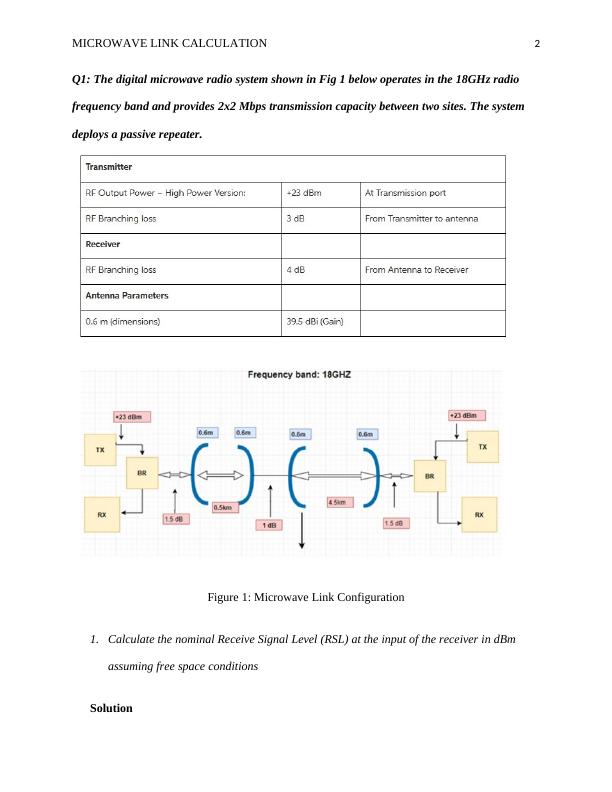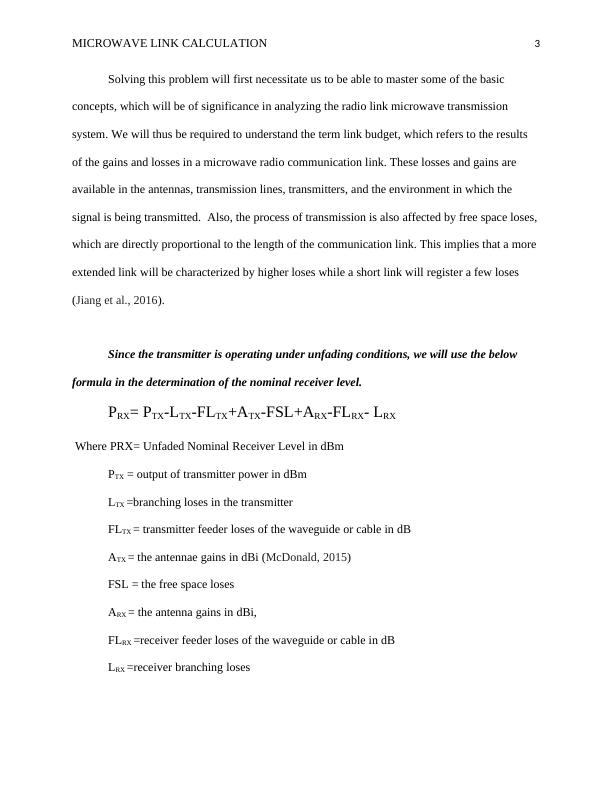Microwave Link Calculation
Calculate the nominal Receive Signal Level (RSL) and discuss the purpose of the passive repeater in a digital microwave radio system. Also, research and present findings on advanced wireless technologies.
7 Pages734 Words93 Views
Added on 2023-03-31
About This Document
This document provides a calculation for the nominal Receive Signal Level (RSL) at the input of the receiver in dBm for a digital microwave radio system operating in the 18GHz radio frequency band. It also explains the purpose of passive repeaters in microwave transmission.
Microwave Link Calculation
Calculate the nominal Receive Signal Level (RSL) and discuss the purpose of the passive repeater in a digital microwave radio system. Also, research and present findings on advanced wireless technologies.
Added on 2023-03-31
ShareRelated Documents
End of preview
Want to access all the pages? Upload your documents or become a member.
DIGITAL MICROWAVE RADIO SYSTEM.
|6
|412
|489
Networking Concepts
|6
|516
|351
Purpose of passive repeaters in the microwave transmission Questions 2022
|5
|415
|2
Understanding Link Budget in Radio Link Microwave Transmission System
|8
|1093
|197
Link Budget Analysis in Electronics
|9
|1496
|251



